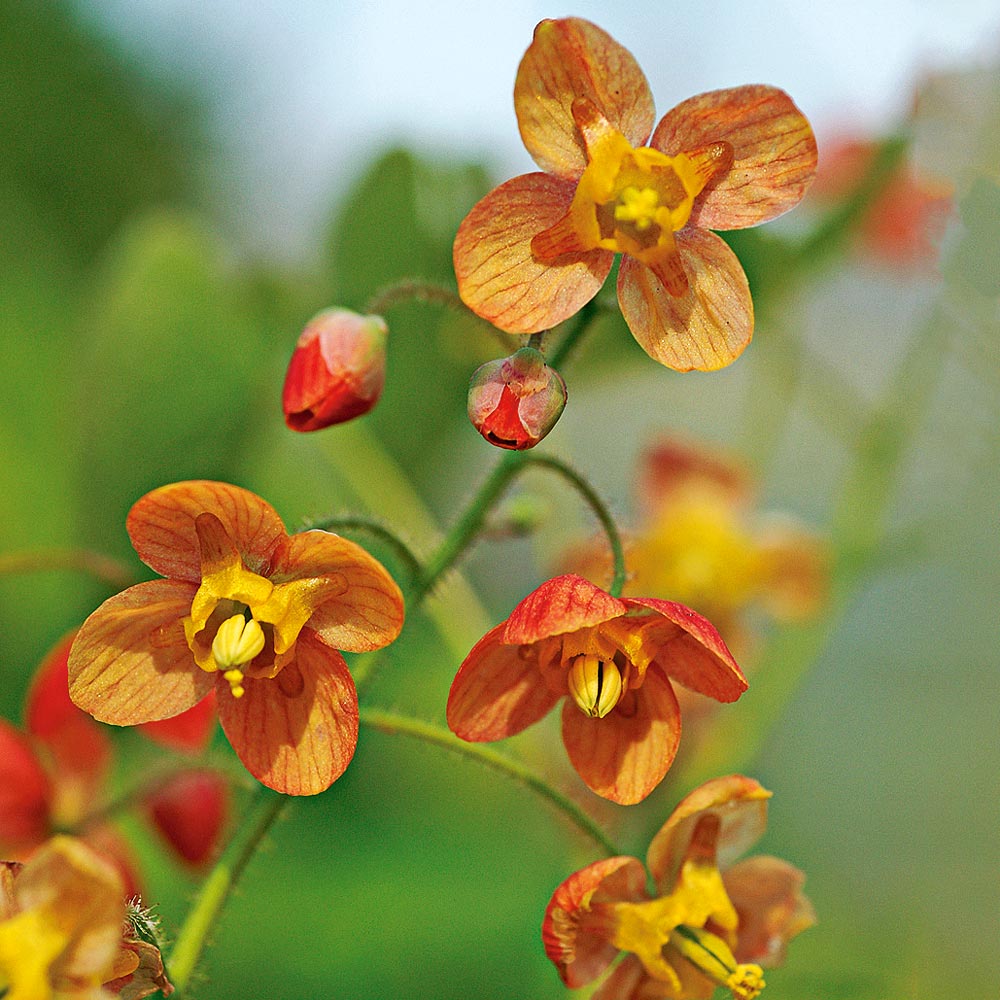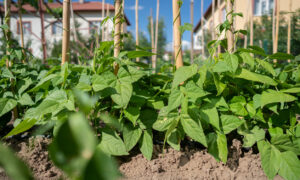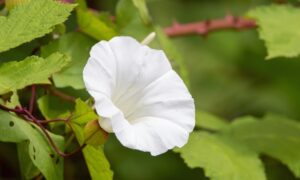We independently research, review, and recommend the best products. If you buy something through our links, we may earn a commission. Learn more.
Commonly known as bishop’s hat, Epimedium Warleyense is a resilient, herbaceous perennial plant that’s loved by gardeners for its vibrant flowers, elegant foliage, and low-maintenance qualities. There’s no denying it’s a truly stunning plant that can serve as a delightful addition to any garden, especially those with shaded areas. In this comprehensive guide, we’ll explore everything you need to know about Epimedium Warleyense, from its notable characteristics and ideal growing conditions, to its common uses and potential problems.
Contents
Why we love Bishop’s Hat
Epimedium Warleyense is well known for its complex flowers and vibrant foliage. It belongs to the Berberidaceae family, making it an excellent choice for cultivated gardens.
Beautiful and Intricate Flowers: One of the most striking features of Epimedium Warleyense is its captivating flowers. The blooms appear in April and consist of loose clusters of coppery orange-red inner sepals and spurred yellow petals. The vibrant color combination is sure to add a touch of elegance to any garden.
Elegant Foliage: In addition to its flowers, Bishop’s Hat boasts a light green, basal foliage with 5-9 heart-shaped leaflets. Interestingly, the foliage typically emerges after the plant has flowered and often displays a tinge of purple upon emerging. The foliage is evergreen in warm winter climates, providing year-round visual interest.
Where are the best places to plant Epimedium Warleyense?
When it comes to picking the perfect spot for Epimedium Warleyense, shade is the key. Remember, this is a perennial plant, meaning it thrives in areas that receive part or full shade. With this in mind, I’ve found that it helps to tuck the plant beneath the canopy of deciduous trees that will provide the shade it craves.
Another tip is to plant epimedium warleyense along the north side of a building to both provide shade and mimic its natural habitat on the forest floor. It’s also well-suited for planting in rock gardens where it can cascade over stones and boulders. The plant’s ability to tolerate dry and shallow-rocky soil conditions makes it an excellent candidate for slopes and embankments where it can help prevent soil erosion.
When is the best time to plant epimedium warleyense?
If you’re looking for the optimal time to plant Epimedium warleyense, then look no further than the spring season when the soil has warmed and the risk of frost has passed. Planting in spring provides the young plants with plenty of time to establish their root systems and acclimatize to their new environment before the arrival of the warmer summer months.
Spring planting also aligns with the plant’s natural growth cycle, as it prepares to produce its captivating coppery orange-red and yellow blooms in April. When planted during this optimal window, Epimedium warleyense can thrive and flourish, contributing its beauty to the garden for years to come.
How to plant and care for Epimedium Warleyense
When planting Bishop’s Hat, prepare the shaded planting site by loosening the soil and enriching it with organic matter, such as compost. This will improve drainage and provide essential nutrients.
Dig a hole that is slightly larger than the root ball of the plant, and gently place the plant into the hole, ensuring that the crown is level with the soil surface. Backfill the hole with soil, and water thoroughly to settle the soil around the roots.
When it comes to caring for Bishop’s Hat, you’ll be relieved to hear that Epimedium warleyense is a low-maintenance plant. However, there are a few key care practices that will help it thrive. Make sure you water the plant regularly, especially during dry periods, to maintain consistent soil moisture. But take care to avoid over-watering, as this plant prefers dry to medium moisture levels. Applying a layer of organic mulch around the base of the plant can help retain moisture and regulate soil temperature.
In late winter, I always recommend trimming back any remaining foliage to make way for new growth in the spring. Epimedium Warleyense is generally resistant to pests and diseases, but keep an eye out for signs of aphids and address any issues as soon as you see them.
By providing the right conditions and practicing simple care routines, you can enjoy the elegant beauty of Epimedium warleyense as it graces your garden with its intricate flowers and charming foliage.
What is Bishop’s Hat used for?
Epimedium warleyense is a versatile plant that can be used in lots of different ways within your garden. One of the most common uses for Bishop’s Hat is simply to provide ground cover. Due to its compact growth habit and spreading nature, Epimedium warleyense can be effectively massed as a ground cover in shaded areas of the garden.
Its loose habit and delicate appearance also makes it ideal for wild gardens, where it can be planted alongside other shade-lovers to create beautiful mixed planting areas. Something else to consider is that Epimedium Warleyense is highly resilient to dry soil and shallow rocky conditions, making it a strong candidate for rock gardens.









